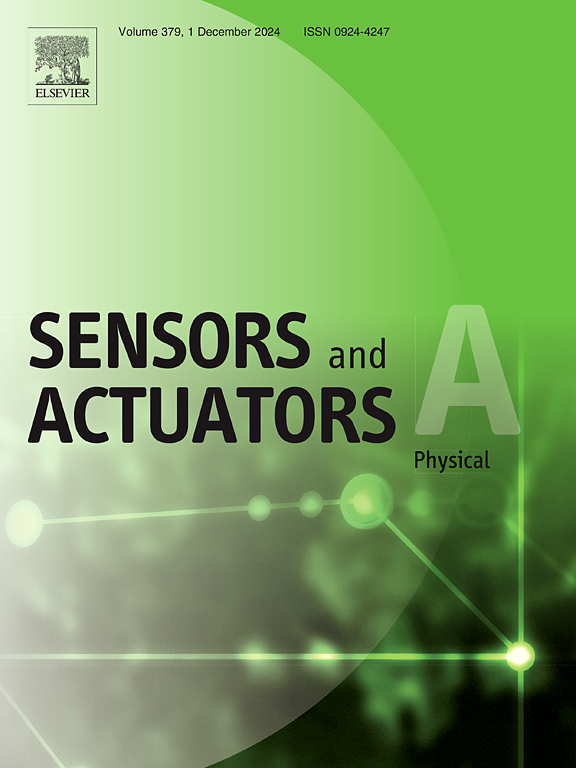Optical crosstalk between SiPMs in dual-ended readout
IF 4.1
3区 工程技术
Q2 ENGINEERING, ELECTRICAL & ELECTRONIC
引用次数: 0
Abstract
Gamma-ray detection performance in scintillation crystals can be improved by coupling multiple photodetectors around the sensitive volume. Greater light collection leads to improved time and energy resolution. However, neighboring detector noise, both uncorrelated and correlated, can produce optical photons that may deteriorate their performance. We studied the impact of external optical crosstalk in a dual-ended readout setup using AFBR-S4N44P014M silicon photomultipliers (SiPMs) from Broadcom coupled to 20 mm thick bismuth germanate (BGO) crystal, with and without scintillation light. SiPMs were biased individually. The behavior of crosstalk was analytically modeled. The dark count rate increased up to 50% when both SiPMs were biased with respect to only one active SiPM. At the same time, the crosstalk probability increased more than 2-fold at high overvoltages due to detection and re-emission of avalanche photons, limiting the operational range and causing an up to 5-fold increase in the total number of detected photons. Energy resolution in BGO was impacted, and the coincidence time resolution distribution shape between two BGO detectors was significantly altered-both in a non-intuitively manner. Experimental results validate the analytical model which rely on a single constant to predict dark count rate, crosstalk and light output enhancement. Crosstalk in multi-SiPM configurations, especially at high overvoltage, significantly impacts performance. Deep understanding of the effects of excess noise in SiPM is crucial for an optimal overall gamma detector operation. Findings extend to applications in high-energy physics, time-of-flight positron emission tomography using dual-ended or monolithic crystals, and cryogenic SiPM experiments in neutrino/dark matter studies.

双端读出中sipm之间的光串扰
通过在敏感体周围耦合多个光电探测器,可以提高闪烁晶体中的伽马射线探测性能。更大的光收集可以提高时间和能量分辨率。然而,相邻的探测器噪声,无论是不相关的还是相关的,都会产生光子,这可能会降低它们的性能。我们使用来自Broadcom的AFBR-S4N44P014M硅光电倍增管(SiPMs)耦合到20 mm厚的锗酸铋(BGO)晶体,在有和没有闪烁光的情况下,研究了双端读出设置中外部光串扰的影响。sipm是单独偏向的。对相声的行为进行了解析建模。当两个SiPM相对于只有一个活性SiPM偏置时,暗计数率增加到50%。同时,在高过电压下,由于雪崩光子的检测和再发射,串扰概率增加了2倍以上,限制了工作范围,导致检测到的光子总数增加了5倍。BGO的能量分辨率受到了影响,两个BGO探测器之间的符合时间分辨率分布形状也发生了显著的变化,但都是以非直观的方式发生的。实验结果验证了利用单常数预测暗计数率、串扰和光输出增强的解析模型。多sipm配置中的串扰,特别是在高过电压下,会显著影响性能。深入了解SiPM中过量噪声的影响对于优化伽玛探测器的整体操作至关重要。研究结果扩展到高能物理,使用双端或单片晶体的飞行时间正电子发射断层扫描,以及中微子/暗物质研究中的低温SiPM实验。
本文章由计算机程序翻译,如有差异,请以英文原文为准。
求助全文
约1分钟内获得全文
求助全文
来源期刊

Sensors and Actuators A-physical
工程技术-工程:电子与电气
CiteScore
8.10
自引率
6.50%
发文量
630
审稿时长
49 days
期刊介绍:
Sensors and Actuators A: Physical brings together multidisciplinary interests in one journal entirely devoted to disseminating information on all aspects of research and development of solid-state devices for transducing physical signals. Sensors and Actuators A: Physical regularly publishes original papers, letters to the Editors and from time to time invited review articles within the following device areas:
• Fundamentals and Physics, such as: classification of effects, physical effects, measurement theory, modelling of sensors, measurement standards, measurement errors, units and constants, time and frequency measurement. Modeling papers should bring new modeling techniques to the field and be supported by experimental results.
• Materials and their Processing, such as: piezoelectric materials, polymers, metal oxides, III-V and II-VI semiconductors, thick and thin films, optical glass fibres, amorphous, polycrystalline and monocrystalline silicon.
• Optoelectronic sensors, such as: photovoltaic diodes, photoconductors, photodiodes, phototransistors, positron-sensitive photodetectors, optoisolators, photodiode arrays, charge-coupled devices, light-emitting diodes, injection lasers and liquid-crystal displays.
• Mechanical sensors, such as: metallic, thin-film and semiconductor strain gauges, diffused silicon pressure sensors, silicon accelerometers, solid-state displacement transducers, piezo junction devices, piezoelectric field-effect transducers (PiFETs), tunnel-diode strain sensors, surface acoustic wave devices, silicon micromechanical switches, solid-state flow meters and electronic flow controllers.
Etc...
 求助内容:
求助内容: 应助结果提醒方式:
应助结果提醒方式:


